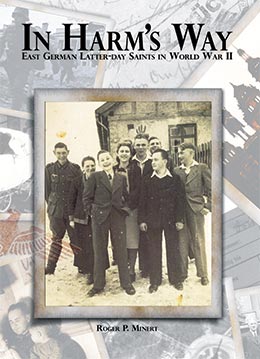Acknowledgments
It should be evident that a work of this expanse could not emanate from the hand of one person in less than three years. This is no exception, and I am quite pleased to admit it. First and foremost, I express my gratitude to the hundreds of eyewitnesses who agreed to share their stories. Conducting these interviews was a difficult and painful task on occasion, but each eyewitness has had the opportunity to see his or her family members memorialized in this volume. None of the participants would call themselves heroes, but what they did was very often heroic. Less than 5 percent of the surviving eyewitnesses declined to participate in our study, and I did not debate their decisions.
I am grateful to the many members of The Church of Jesus Christ of Latter-day Saints (LDS Church) who provided names of friends whom they thought were qualified as eyewitnesses. Their vigilance led to interviews with persons who otherwise would not have been identified. Other friends directed our attention to published stories and other media that turned out to be of importance to this work.
The staff and missionaries of the Church History Library in Salt Lake City have been most cordial in assisting us in our search for pertinent literature and other items in their collection. I am especially grateful to Matthew Heiss, an archivist specializing in Germany, who opened many doors for us through his enthusiastic support of the research. One of his great-aunts perished in the firebombing of Dresden, and her name is included among the losses of the Dresden-Altstadt Branch.
The Religious Studies Center at Brigham Young University, under the direction of Professor Richard Neitzel Holzapfel, has proffered support in many ways since this project began in earnest in 2005. The center’s principal support has come in the form of funds to pay the wages of student research assistants. The assistance of Devan Jensen, Brent R. Nordgren, Richard Peterson, and Joany O. Pinegar has also been invaluable. The Department of Church History and Doctrine and the Office of Research and Creative Activities (ORCA) at Brigham Young University also awarded grants to fund student research assistants’ wages and to fund travel to Europe to conduct interviews, examine historical venues, and presenting programs on this topic to Church members and friends.
Members of the Church in Germany and Austria have also come to my aid by identifying eyewitnesses and helping to establish interview times and venues. Several were so kind as to take me into their homes for a night or two as I traversed the two countries. Significant contributions from private individuals allowed me to retain the services of student research assistants (see below); in this regard, I offer my thanks to Cal Wing, Renate Sward, and Detlef Lehnardt.
Patty Smith in the Faculty Support Office of Religious Education has been most supportive of this project by allowing her student employees to transcribe more than one hundred eyewitness interviews conducted in English. My colleagues in the Religious Education department have offered excellent suggestions and critical readings of portions of the text.
Readers and reviewers have been solicited from the ranks of my friends and associates and from eyewitnesses. They have served with distinction in locating text in need of clarification or revision. I express my appreciation to my father, Roy T. Minert, my brother Brian Minert with his wife, Debbie, and my daughter, Stephanie Seegmiller, for their reviews of the initial text. I am also indebted to readers Marietta Glauser, Walter Kindt, Kate Adams, Robert Hasara, the late Bernie Roper, Todd Roach, Daniel Boden, Melissa Burton, Miriam Burton, and Jim Cavens.
One of the greatest pleasures of my academic career has been my association with student research assistants. I have engaged twenty-two such students in the process of writing this book. What a gratifying experience it has been to see them take ownership of significant aspects of the book and to carry out their stewardship with enthusiasm and dedication. The more they were involved with the research, the more they understood the importance of completing this work and presenting it to the Church and to the world as a monument to the people about whom it is written. I have expressed my gratitude to them collectively and personally, and list them here as well:
Archivist: Mary Wade, Sarah Gibby Peris, Rachel Gale Tolman, Kiarah Sue Cox
Interviews in German: Jennifer Heckmann, Judith Sartowski, Michael Corley
Interviews in English: Jennifer Heckmann, Michael Corley, Judith Sartowski, Rachel Gale Tolman
Interview translation (German to English): Judith Sartowski
Archival research: Kathryn Penfield Price, Colter Kennedy, Emily Cox, Nicole Gibb Taylor
Memorial Book compilation (English sources): Nicole Gibb Taylor
Memorial Book compilation (German sources): Julianna Baumann Edlinger, Emily Cox
Correspondence: Zach Alleman, Samantha Boden, Jennifer Heckmann, Mary Wade
Interview text editing: Mary Wade, Kelly Goff, Elizabeth Stubbs
Book text editing: Mary Wade, Kellyanne Ure
Eyewitness contacts: Katie Althoff, Zach Alleman
Time line: Zach Alleman
Webmaster and computer support: Trevor Brown, Casidy A. Andersen
Maps and demographics: Samantha Boden, Amelia Hollingsworth
